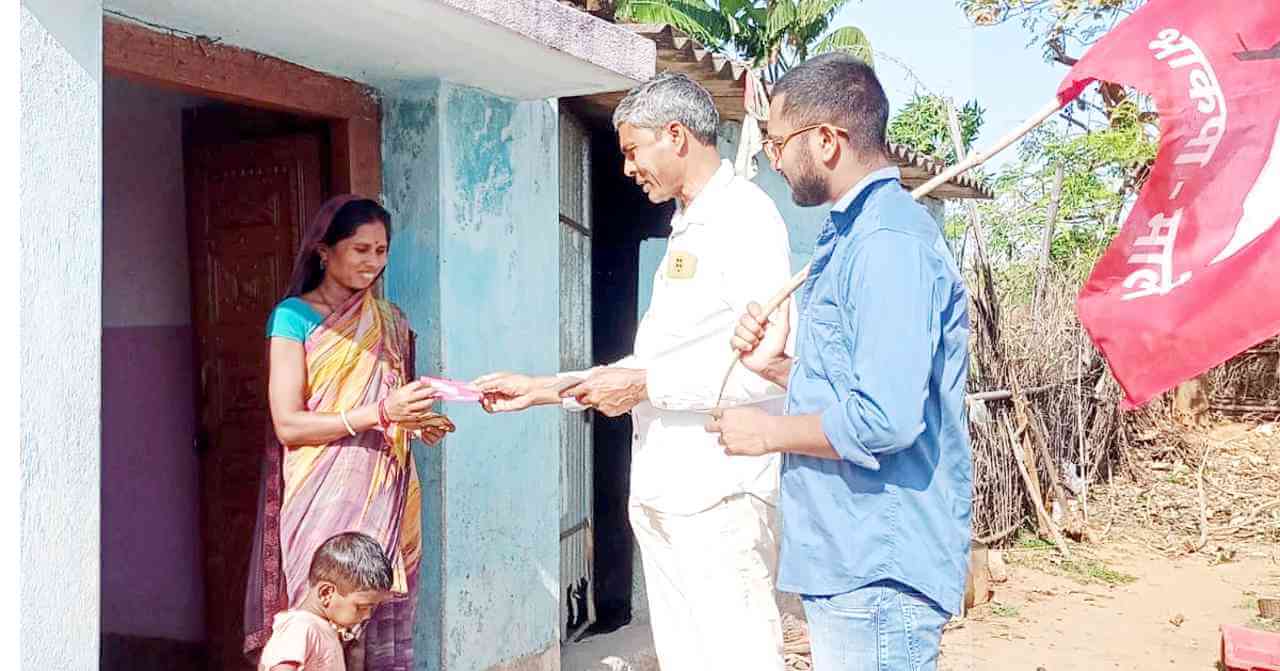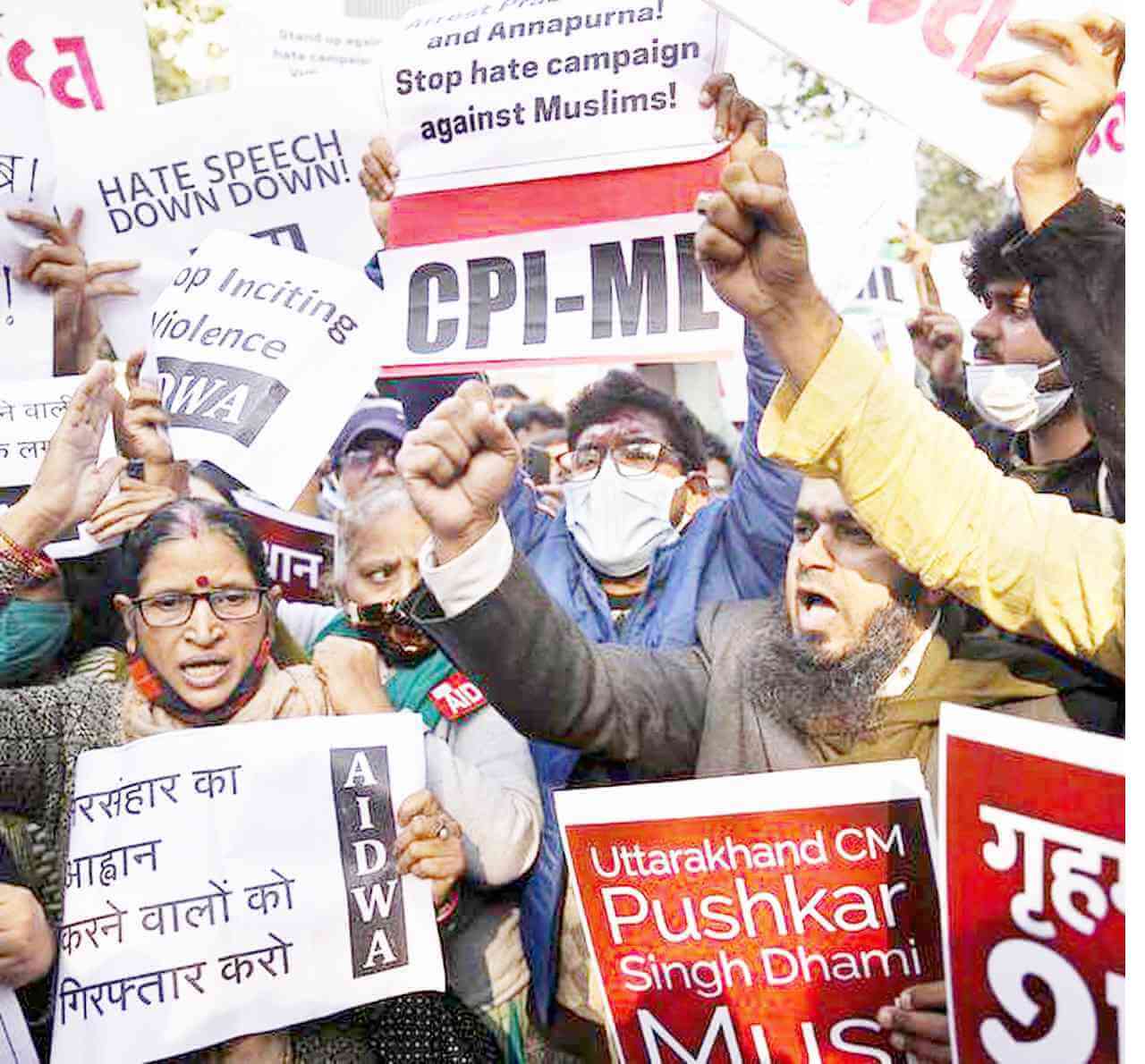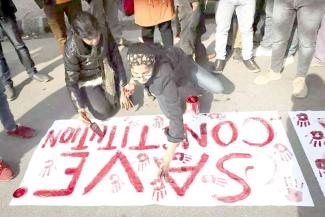The 2024 elections have delivered a major setback to the BJP by stopping it at 240 seats, thirty-two seats short of the majority. What makes this result look almost like a victory for the opposition and defeat for the BJP is that it came in India's most unequal elections till date with the media, the Election Commission and the administrative machinery all playing a highly partisan role.
Also, the number 240 appears disproportionately smaller in scale when viewed against the BJP's repeatedly declared target of 370 seats for the party and '400 paar' (400-plus) for the NDA coalition. The hype had started dying down during the elections and the BJP had recalibrated its target as 'teesri bar Modi Sarkar' or return of the Modi government for the third time in a row. But the exit polls once again rekindled the hype and created an orchestrated surge in the share market (Modi and Shah had already advised investors on Adani's TV channel to buy shares before June 4) only as a prelude to a major crash on the counting day.
Thanks to a major increase in the BJP's vote share in the coastal and southern region (Telangana 15.4, Andhra Pradesh 10.3, Tamil Nadu 7.6, Odisha 6.4, Kerala 3.7), the party has more or less managed to hold on to its 2019 vote share which dropped only marginally from 37.3% to 36.5%. By contrast, the Congress has managed to nearly double its tally of seats by registering a modest 2% increase in vote share (the party however contested only 328 seats in 2024 compared to 421 in 2019).
What made the BJP set the 400-plus target? Was it to cross the 1984 Congress record of 404 seats? Was it just the expectation of a continued increase over and above the 2019 BJP tally of 303 and NDA tally of 353? Was it based on the Yogi formula of 80:20, expecting an unprecedented consolidation of Hindu support as an electoral reward for the construction of the Ram Mandir in Ayodhya? Asked where the 400-plus seats would come from, a smug Yogi had told a TV anchor 'you can count 80 from UP itself'! It was therefore particularly befitting that the BJP suffered its most stunning setback in UP where it lost as many as 29 seats including the very seat of Ayodhya (Faizabad) to a veteran Dalit leader of the Samajwadi Party.
Blunting of Fear and Hate
What are the key takeaways from the 2024 elections? The biggest takeaway is that the BJP's two main weapons - fear and hate - have been blunted. The idea that Modi is invincible has taken a huge beating. The belief that a brazen anti-Muslim hate campaign can be the most effective vote-catching formula has been exposed to be hollow and false. The BJP lost at least twenty seats where Modi delivered his most hate-filled speeches in this election season.
Veritable People's Movement

The second most reassuring gain has been the demonstration of the power and resilience of the people. The BJP had at its disposal not only unlimited money and media power and massive administrative backing but also what is believed to be a ruthlessly efficient election machine powered by Amit Shah's much-hyped 'Chanakya neeti' and the fabled contingent of 'panna pramukhs'. The belated formation of the INDIA coalition looked no match for the resources and organisational might of the BJP. Yet the people of India turned it into a close fight and beat the BJP in a big way right in the Hindutva heartland of Uttar Pradesh. Beyond the political constituents of INDIA, various movement forces, civil society organisations, campaign platforms and activists of digital communication media pooled their resources and energy to turn the election into a veritable people's movement.

The BJP suffered a dent both in terms of its core agenda of Hindutva and the personality cult built around what is called Brand Modi. Unlike 2019, there was no ultra nationalist wave in these elections and if the BJP expected the Ram Mandir in Ayodhya to create an electoral storm in 2024 it could not have been more mistaken. The Samajwadi Party not only won the very Ayodhya/Faizabad seat, the BJP lost most seats in the entire region.
Many commentators have described 2024 as a 'normal' or 'local' election devoid of any national narrative. But if economic questions and livelihood concerns of the common people have become the election agenda and have been reflected in a vote against the incumbent government, surely it cannot be treated as a 'local factor'? In fact, alongside the bread-and-butter issues of everyday existence, a major component of the election discourse this time was the growing concern over the future of India's democracy and the Constitution.
The Indian electorate has proved that the concern over the backsliding of democracy or degeneration of India's parliamentary democracy into an electoral autocracy is no 'western propaganda', it is a danger deeply felt by more and more Indians across the country. The assault on various aspects of the Constitution - from federalism and reservation to secularism and citizenship - has also been directly experienced by the people and when BJP leaders themselves started linking the 400-plus target with plans to amend and change the Constitution, it quickly turned into the biggest talking point in this election season. As one of India's leading pollsters confessed in a television interview, even two months ago he would have laughed away any suggestion that democracy and the Constitution could become the common voter's election agenda, but the elections proved him wrong.
Digital War for Democracy
Another major feature of this election was the rise of YouTube as the most effective medium of political news. The degeneration of much of India's so called 'mainstream media' into a propaganda wing of the government has considerably eroded the viewership of most television channels. Many of India's courageous journalists for whom journalism is still about speaking truth to power have also had to take to YouTube as their preferred platform of communication. This has shaped the phenomenal rise of digital media in today's India and we have seen the power of this new tool of mass communication in these elections.
The videos of journalists and communicators like Ravish Kumar and Dhruv Rathee and the growing community of youtubers, the digital warriors for democracy, have put up a highly courageous and effective resistance against the relentless propaganda of hate and lies by the combined network of Godi Media and WhatsApp university. The Modi government is now understandably desperate to try and erode the freedom of the digital media and subject it to its vicious stranglehold.
BJP's Mischievous Interpretation
There has been a sinister systematic attempt in the Modi era to disenfranchise Muslims through large-scale deletion of names from electoral rolls and by discouraging and obstructing Muslim voters in various ways to keep them away from the polling booths. Modi even tried to present the 2024 elections as a contest between 'vote jihad' and 'Ram rajya'. Now that this shrill hate campaign and polarisation politics have failed to secure a majority for the BJP, a frustrated BJP camp has launched a renewed campaign of Islamophobia blaming the Muslim voters (and ungrateful Hindus too) for the shocking outcome.
This mischievous campaign has found an amplifier in the much hyped election strategist Prashant Kishor who had egg all over his face on 4 June after smugly predicting a return of the Modi regime with bigger numbers than 2019. This mischievous distorted narrative first trivialises the improved performance of the Congress by attributing it to a 'free minority vote bank' of twenty percent. In this 'free minority vote bank' he counts eighteen percent Muslims (a huge exaggeration which exceeds the current estimate by four percent) followed by Sikhs and Christians. The Congress vote share of about 23% is thus sought to be brushed aside as nothing significant beyond a consolidated minority vote!
This is patently untrue. The Congress this time contested nearly hundred seats less than it did in 2019, down to 328 from 421. So the vote share figure understates the actual average increase in votes polled by the Congress in seats contested. And the proportion of Muslim or minority vote in this overall vote share must also be seen in the right perspective.
The term 'vote bank' is routinely used by the Sangh brigade as a dog whistle to target the Muslim community. If Muslims in India vote predominantly against the BJP, they are perfectly entitled in a democracy to make this political choice. And this choice, nay compulsion, is dictated by the BJP's aggressive Islamophobic politics and track record. The BJP openly says it does not want Muslim votes, does not field any Muslim candidate and has now formed a jumbo cabinet with 70-plus ministers without a single representative from India's largest minority community. And the whole world knows what a period of acute insecurity Indian Muslims are having to face under the Modi regime. In addition to the various forms of communal violence perpetrated often with open administrative complicity, the last ten years have witnessed the promotion of new forms of anti-Muslim violence like mob lynching and bulldozing of Muslim homes and shops.
And yet in spite of a general anti-BJP orientation of the average Muslim voter, the Muslim vote is not really as monolithic as the Sangh brigade would like us to believe. Even if the BJP's own share in Muslim votes is understandably insignificant, some of its NDA allies (for instance, the JDU in Bihar, TDP in Andhra Pradesh, RLD in Uttar Pradesh or the JDS in Karnataka) do still poll a certain share of Muslim votes. Then there are non-INDIA parties like the BSP, AIMIM, AIUDF of Assam or the ISF in West Bengal which account for a sizable share in their areas of influence. And finally, within INDIA, the Congress is a minor recipient of Muslim votes in major states like Uttar Pradesh, West Bengal and Bihar where INDIA allies like the SP, TMC and RJD poll bigger shares.
Solidarity of the Oppressed

In other words, there can be no denying the fact that the revival of the Congress in the 2024 elections, howsoever modest, has happened not because of the consolidation of Muslim votes but because of the increased support from non-Muslim communities, Hindus in particular.
The most mischievous part of this narrative is that it blames Muslims for their declining number in Parliament. Are Muslims responsible for the fact that the number of Muslim MPs in the 18th Lok Sabha is only 24 in a house of 543, an all-time low in India's parliamentary history? The number is low precisely because the largest single party in India's Parliament has a declared policy of shunning Muslims, and its politics and governance have always been virulently Islamophobic. To ask Indian Muslims to accept the BJP for what it is and stop looking for ways to defeat and weaken it is to justify the BJP's Islamophobia. The 24 Muslim MPs have basically come from the non-NDA pool of 250 MPs, the ratio thus works out to be close to ten percent. Had the NDA too maintained this ratio there would have more than fifty MPs in the 18th Lok Sabha.
It is one thing to ask non-BJP parties to be more responsive to the issue of Muslim representation, but asking Muslims to move away from building effective social and political coalitions against the BJP and gravitate to exclusive identity politics can only have totally opposite implications. It can only be a recipe for helping the BJP by disintegrating the anti-BJP vote and thereby ensuring greater invisibilisation and certainly not improved representation of Muslims in Indian politics. Any comparison between Sikhs and Muslims in terms of representation is also totally misplaced. Sikhs are concentrated primarily in the state of Punjab and most Sikh MPs come from this state. The Muslim population on the other hand is spread across the country, albeit not uniformly.
There are many constituencies where Muslim population ranges between fifteen to twenty percent and which used to elect Muslim MPs in the past, but the majority of Muslim MPs today come only from constituencies where Muslims comprise the largest community locally accounting for at least a third of the population. This is the impact of the BJP's divisive and Islamophobic politics. The only way to defeat this design is to forge stronger and wider bonds of solidarity among various minorities and marginalised groups, both nationally and locally, in the shared battle for democracy and justice, and the majority of Indian Muslims are already following this course. In fact, the 2024 elections have also highlighted the need and possibility of developing similar solidarity among Dalits, Adivasis and other oppressed and marginalised identities.
United Assertion with in Parliament and Beyond
The spirit of solidarity is central not just to building local or regional level social coalitions but also in fostering a coalition at the all-India level comprising a broad spectrum of ideological streams and regional parties. The INDIA coalition answers this need in some essential respects and this is why in spite of its belated formation and lack of local or state-level unity in certain states, it has succeeded in securing a high degree of popular support and electoral success.
With the declining influence of ultra-nationalist fervour and Hindutva frenzy in the electoral arena, the core of the BJP under Modi and Shah has been exposed as a crony capitalist enterprise driven by an aggressive Gujarat lobby. Increasing commercialisation of religion and domination of the Gujarat lobby and its corporate cronies have started emerging as the manifest features of the economic and political equations around the much-hyped temples and temple corridors. From UP to Tamil Nadu, and Maharashtra to Manipur, the people of India have sent out a strong message against over-centralisation, disproportionate domination of the Gujarat lobby and the disaster that passes for 'double engine governments' and 'maximum governance' across much of India.
It is true that the 2024 verdict has fallen short of an outright defeat and ouster of the Modi regime. But it has surely dented the arrogance and power of the regime in a big way. Democracy has got some much needed breathing space. The agenda that has been set in these elections around secure livelihood, justice, constitutional rule of law, secular democracy and inclusive and diverse India must be backed within Parliament and out on the street with the indomitable courage and power of the people. Constitutional democracy has indeed struck deep roots in India over the last seven decades and we, the people of India can never allow fascism to get entrenched and turn India into a republic of fear and hate.










